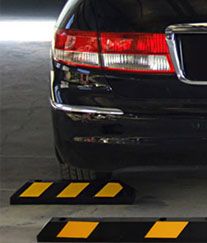Overview
Importance of road safety in school areas
Road safety in school areas is of utmost importance as it ensures the well-being and protection of our children. With the increasing traffic and congestion on the roads, it is crucial to implement effective measures to prevent accidents and ensure the safety of students. Speed bumps are one such measure that can greatly contribute to road safety in school areas. By slowing down vehicles and creating a visual and physical reminder for drivers to be cautious, speed bumps help reduce the risk of accidents and create a safer environment for children to travel to and from school. These measures not only protect the lives of our young ones but also promote a culture of responsible driving and awareness among all road users. Therefore, it is essential to recognize the importance of road safety in school areas and take proactive steps to implement effective measures like speed bumps to ensure the safety and well-being of our children.
Statistics on accidents in school areas
According to recent statistics, accidents in school areas have become a growing concern. Each year, a significant number of accidents occur in these zones, posing a threat to the safety of students and pedestrians. These accidents can result in severe injuries or even fatalities, highlighting the urgent need for effective measures to enhance road safety. By analyzing the data, it is evident that speed bumps can play a crucial role in reducing the number of accidents in school areas. Implementing speed bumps can help to slow down vehicles, ensuring that drivers adhere to the designated speed limits and providing a safer environment for everyone. Additionally, speed bumps serve as visual reminders for drivers to be cautious and vigilant while approaching school zones. With the alarming statistics on accidents in school areas, it is imperative that authorities prioritize the installation of speed bumps as an effective measure to mitigate the risk and ensure the well-being of students and pedestrians.
Current measures for road safety in school areas
Current measures for road safety in school areas include the installation of speed bumps. speed bumps for asphalt are physical obstacles placed on the road to slow down vehicles, forcing drivers to reduce their speed. These bumps are particularly effective in school areas as they serve as a visual reminder for drivers to be cautious and alert. Additionally, speed bumps help create a safer environment for pedestrians, as they discourage speeding and promote the use of crosswalks. However, it is important to note that speed bumps should be strategically placed to avoid causing inconvenience or discomfort to drivers. Overall, speed bumps are a valuable tool in ensuring road safety in school areas.
Speed Bumps: An Effective Solution
Definition and purpose of speed bumps
Speed bumps, also known as speed humps or speed breakers, are traffic calming devices that are installed on roads to reduce the speed of vehicles. They are typically found in school areas and other residential zones where pedestrian safety is a priority. The main purpose of speed bumps is to slow down vehicles and create a safer environment for pedestrians, especially children. By forcing drivers to reduce their speed, speed bumps help prevent accidents and promote road safety in school areas.
Benefits of using speed bumps in school areas
Speed bumps are an effective measure for enhancing road safety in school areas. They offer numerous benefits that contribute to the overall well-being of students and pedestrians. Firstly, speed bumps act as a visual deterrent, reminding drivers to slow down and be cautious while approaching school zones. This helps reduce the risk of accidents and potential injuries. Additionally, speed bumps encourage drivers to adhere to the designated speed limits, creating a safer environment for children to cross the road. Moreover, these traffic calming devices also promote a sense of awareness among drivers, as they need to pay more attention to their surroundings and the presence of pedestrians. By implementing speed bumps in school areas, communities can significantly enhance the safety and security of students, ensuring a conducive learning environment for everyone involved.
Types of speed bumps and their effectiveness
Speed bumps are a common traffic calming measure used in school areas to reduce vehicle speeds and ensure the safety of students. There are several types of speed bumps that vary in design and effectiveness. One type of speed bump is the traditional speed hump, which is a raised portion of the road that spans the width of the lane. These speed bumps are effective in slowing down vehicles and encouraging drivers to be more cautious. Another type of speed bump is the speed cushion, which consists of a series of raised sections that allow larger vehicles, such as emergency vehicles and buses, to pass over them without significant impact. This type of speed bump is particularly useful in school areas where there is a need for uninterrupted traffic flow. Additionally, rubber speed bumps are often used as a temporary measure for road construction or events. These speed bumps are lightweight and can be easily installed and removed. Overall, the effectiveness of speed bumps in school areas depends on factors such as design, placement, and driver compliance. Proper implementation of speed bumps can significantly contribute to the overall road safety in school areas.
Installation and Placement of Speed Bumps
Factors to consider when installing speed bumps
When installing speed bumps, there are several factors that need to be considered. Firstly, the location of the speed bumps is crucial. They should be placed strategically in areas where speeding is a common occurrence, such as near schools or residential areas. Secondly, the design of the speed bumps is important. They should be well-marked and easily visible to drivers to ensure that they are effective in slowing down vehicles. Additionally, the height and width of the speed bumps should be appropriate to prevent damage to vehicles while still being effective in reducing speed. Lastly, it is important to consider the impact of speed bumps on emergency vehicles. Proper planning and coordination with emergency services should be done to ensure that speed bumps do not hinder their response time. By considering these factors, the installation of speed bumps can be an effective measure in promoting road safety in school areas.
Proper placement of speed bumps in school areas
Proper placement of speed bumps in school areas is crucial for ensuring the safety of students and pedestrians. Speed bumps should be strategically positioned at key locations, such as near school entrances, crosswalks, and areas with high foot traffic. This helps to slow down vehicles and create a safer environment for everyone. Additionally, speed bumps should be clearly marked with reflective materials and signage to alert drivers of their presence. By implementing proper placement of speed bumps in school areas, we can effectively reduce the risk of accidents and promote road safety.
Guidelines for maintaining speed bumps
Guidelines for maintaining speed bumps are crucial to ensure their effectiveness in enhancing road safety in school areas. Regular inspections and maintenance should be conducted to identify any damages or signs of wear and tear. Prompt repairs should be carried out to prevent further deterioration and maintain the desired level of functionality. Additionally, proper signage and markings should be installed to clearly indicate the presence of speed bumps and alert drivers to reduce their speed. Regular cleaning and clearing of debris should also be performed to ensure the visibility and functionality of the speed bumps. By following these guidelines, the effectiveness and longevity of speed bumps can be maximized, ultimately contributing to a safer environment for students and pedestrians in school areas.
Effectiveness of Speed Bumps
Studies and research on the effectiveness of speed bumps
Studies and research on the effectiveness of speed bumps have consistently shown positive results in enhancing road safety in school areas. Numerous studies have demonstrated that the presence of speed bumps significantly reduces vehicle speeds, thereby minimizing the risk of accidents and ensuring the safety of pedestrians, especially children. These studies have also highlighted the effectiveness of speed bumps in promoting compliance with speed limits and encouraging drivers to exercise caution and attentiveness while driving through school zones. Furthermore, research has indicated that speed bumps serve as a visual reminder for drivers to slow down and navigate carefully, contributing to the overall reduction of traffic-related incidents in school areas. Overall, the evidence from various studies supports the implementation of speed bumps as an effective measure for enhancing road safety in school zones.
Reduction of speed and accidents
One of the most effective measures for road safety in school areas is the reduction of speed. Speed bumps are commonly used to slow down vehicles and ensure that drivers adhere to the designated speed limits. These physical obstacles force drivers to slow down, reducing the risk of accidents and creating a safer environment for students. Studies have shown that the presence of speed bumps can significantly decrease the number of speeding incidents and improve overall road safety in school zones. By implementing this measure, schools can prioritize the well-being of their students and promote responsible driving behavior.
Impact on traffic flow and congestion
The presence of speed bumps in school areas has a significant impact on traffic flow and congestion. These traffic calming measures are designed to slow down vehicles and ensure the safety of students. While they are effective in reducing speeding and promoting safer driving habits, they can also lead to increased congestion during peak hours. The need to slow down or come to a complete stop at speed bumps can cause delays and longer travel times for motorists. However, it is important to prioritize the safety of students over convenience, and the implementation of speed bumps in school areas remains an essential measure for road safety.
Challenges and Considerations
Potential drawbacks of using speed bumps
While speed bumps are commonly used as a measure to enhance road safety in school areas, they do come with potential drawbacks. One of the main concerns is that speed bumps can cause discomfort and inconvenience for drivers, especially those with lower suspension vehicles. Additionally, speed bumps can also result in increased noise pollution, as vehicles tend to slow down and then accelerate abruptly when passing over them. Moreover, speed bumps may not be effective in reducing speeding in some cases, as some drivers may simply choose to accelerate quickly between the bumps. It is important to carefully consider these drawbacks and explore alternative road safety measures that can be implemented in school areas.
Balancing road safety with convenience
Balancing road safety with convenience is crucial when implementing measures for road safety in school areas. While the primary goal is to ensure the safety of students, it is equally important to consider the convenience of parents, teachers, and other road users. Speed bumps are one effective measure that can help achieve this balance. By slowing down vehicles near schools, speed bumps reduce the risk of accidents and provide a safer environment for children. However, it is essential to place speed bumps strategically to minimize inconvenience for drivers and ensure smooth traffic flow. Finding the right balance between road safety and convenience is key to creating a successful and effective road safety plan in school areas.
Addressing concerns of emergency vehicles
Addressing concerns of emergency vehicles is a crucial aspect when implementing speed bumps in school areas. While speed bumps play a significant role in reducing speeding and ensuring the safety of students, it is important to consider the needs of emergency vehicles. To address this concern, it is essential to design speed bumps that allow emergency vehicles to pass through smoothly and without any delay. This can be achieved by implementing measures such as creating wider gaps between the speed bumps or using alternative solutions like speed humps or speed cushions that are more suitable for emergency vehicles. By taking these considerations into account, we can strike a balance between road safety in school areas and the efficient movement of emergency vehicles.
Conclusion
Summary of the importance of speed bumps in school areas
Speed bumps play a crucial role in ensuring the safety of school areas. They are an effective measure to control and reduce vehicle speed, especially in areas where children are present. By slowing down vehicles, speed bumps provide a physical reminder to drivers to be cautious and alert. This helps prevent accidents and protects the lives of students and pedestrians. Additionally, speed bumps encourage drivers to adhere to speed limits and promote a safer environment for everyone in the school community. Overall, the installation of speed bumps in school areas is an important step towards enhancing road safety and protecting the well-being of students.
Call to action for implementing speed bumps
In order to ensure the safety of children in school areas, it is crucial to take immediate action and implement speed bumps. Speed bumps are an effective measure to slow down vehicles and reduce the risk of accidents. By installing speed bumps, drivers are forced to reduce their speed, providing a safer environment for pedestrians, especially children. It is important for local authorities and school administrations to recognize the importance of speed bumps and take the necessary steps to implement them. Together, we can create safer roads for our children and promote road safety in school areas.
Future considerations for improving road safety
In order to further enhance road safety in school areas, it is important to consider future measures and improvements. One potential consideration is the implementation of advanced technology, such as smart traffic lights and speed monitoring systems. These technologies can help to better regulate traffic flow and enforce speed limits, reducing the risk of accidents. Additionally, increasing public awareness and education about road safety can play a crucial role in improving overall safety. This can be achieved through campaigns, workshops, and educational programs targeted at both students and parents. Furthermore, collaboration between schools, local government, and law enforcement agencies is essential for effective implementation and enforcement of road safety measures. By continuously evaluating and updating road safety strategies, we can ensure a safer environment for students and pedestrians in school areas.







